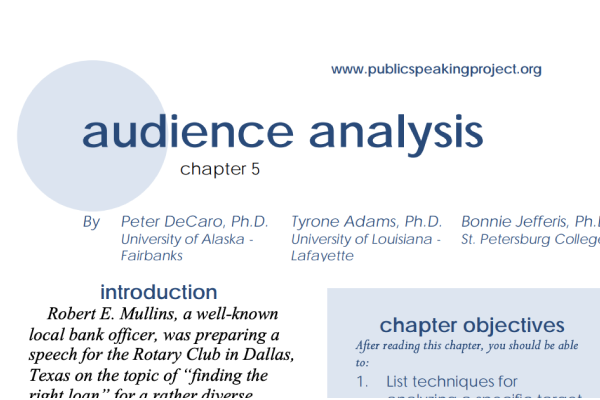
An LMS portal for training is an online platform that offers educational content. It can be used to both teach students and conduct professional development courses. It can provide access to world-class courses created by expert course authors. Courses can be delivered in many formats, including classroom training or virtual classroom training.
Pedagogue
You may wonder how to start your own online course using an LMS. The good news? There are many free options. Learnbook is a popular LMS platform which offers interactive tools. It also allows users to record classes and supports video conference. It also features a range of other features, such as analytics. Online courses can be created by uploading your PowerPoint presentations.
Once you have selected an LMS training portal, it is time to assign roles to users. The role determines how content and training are delivered. A pedagogue can edit individual lessons and organize them based in different activities and prerequisites. The pedagogue has full control over the lessons and can also share course data with other members of the course.

Totara
Totara is a SaaS LMS platform that provides a wide range of learning tools and collaborative tools to its employees. Its goal is to change the way companies learn. The platform assigns courses automatically to learners based upon their role and group. However, it does not feature a comprehensive content library.
Totara is easy to install and configure. It supports SOAP, XML-RPC, and REST. Totara can also be integrated with external systems like payroll and HR systems. Totara supports AICC, SCORM, and xAPI. Totara also allows you create your own courses.
EdApp
In the lms training space, EdApp stands out as a unique learning management system. This platform offers many benefits to users including rich libraries, authoring tools and integrations with other systems. It seamlessly transliterates courses into over 100 different languages. As an author, you can use EdApp to create engaging training materials and deliver them to your audience on any device.
This LMS enables instructors to create, customize and deliver personalized learning experiences. The system includes a template library, push notifications as well as analytics. It can also be used on mobile devices and the web with gamification capabilities. It can be used for a range of learning experiences such as classroom-style learning, online classes and self-paced learning.

Learning Pool
Learning Pool on LMS is a powerful learning management system (LMS) that is built on the Moodle platform. It offers many features that will make it a good choice for companies looking to maximize their training. In our 7 Reasons to love the Learning pool LMS Infographic, you will learn why so many customers love it.
Azure AD supports single sign on using the Learning Pool LMS. However you need to create a link connection between Azure AD and Learning Pool LMS users. You can then configure the Learning Pool LMS for single sign-on in the Azure portal.
FAQ
What is the biggest challenge in online learning?
The biggest challenge is keeping students engaged throughout the course. It is difficult to keep students interested in the lessons you teach. How can they expect to learn anything else? It is important to offer your students many options to help them stay focused. This means giving them options like choosing which modules they want to study first, which chapters they want to read next, which exercises they want to try out, which tests they want to take, which assignments they want to start working on, and which websites they want to visit, which videos they want to watch, which games they want to play, etc.
How can I decide which eLearning platform I want to use?
Today, there are many eLearning platforms. Some are free and others are more expensive.
Ask yourself some questions when choosing between these options.
-
Do you have the desire to create your own learning materials. There are many free tools that you can use to create your own eLearning course. These include Adobe Captivate. Articulate Storyline. Lectora. iSpring Suite. And Camtasia.
-
Do you want to purchase pre-made eLearning courses Several companies sell pre-packaged courses. They can cost anywhere from $20 to 100 dollars per course. Mindjet (Edusoft), and Thinkful are three of the most highly-respected.
-
Can I have both? Many people find that mixing their own materials with those supplied by companies produces the best results.
-
Which option would be best for you? It all depends on what your situation is. It all depends on your situation. However, after you have gained some experience, it may be worth looking into purchasing pre-designed courses.
How much multimedia can an eLearning course include?
The answer will depend on what you want. You may prefer to communicate information quickly. You may need to give training that will help people do things better.
It is important to understand what you want from your eLearning course. Understanding what learners expect from your course is essential. This will allow you to make sure you have enough content for your learners to reach their goals.
Take, for example:
It's best to give people lots of examples to learn about Microsoft Word. However, you should show people many types of Excel spreadsheets if you want them to learn how to use it.
Also, consider whether or not you will use images or video to illustrate your concepts.
Video is great to show people how it works, but not so much for explaining complex topics. It is also expensive to produce. While images are more affordable to produce, they do not convey the same emotional impact as videos.
Let's be clear: Before you start designing an eLearning course, you need to carefully consider what you want.
What does eLearning mean?
E-learning requires a lot of time and effort. It also requires an understanding of how people learn. The learning experience should focus on what learners are looking to accomplish.
The content must be informative and engaging. Learning materials should include visual aids such as images, videos, animations, and interactive elements.
E-learning needs to be entertaining and fun. It should put a lot of emphasis on motivating learners. This includes encouraging and providing feedback to learners who are working hard towards reaching their goals.
What are some elearning tools?
Interactive media, such as animation and audio, is the best way to convey learning content.
These media allow learners interact with the content directly. They can also be used to increase learner engagement.
Online courses often include video, text, audio, and interactive features.
These courses might be free of charge, or they may cost a fee.
Some examples include:
-
Online courses
-
Virtual classrooms
-
Webinars
-
Podcasts
-
Video tutorials
-
Self-paced e-learning modules
-
Interactive
-
Social networking sites (SNS).
-
Blogs
-
Wikis
-
Discussion forums
-
Chat rooms
-
Email lists
-
Forums
-
Quizzes
-
Polls
-
Questionnaires
Where can e-learning be used?
E-Learning can be a great way to learn for those who are not able to attend face–to-face classes. It can be used to teach another person how to do something.
E-Learning is a popular option for businesses as it can be used in training programs.
E-Learning is becoming more popular in schools due to its time and money saving.
Statistics
- Reliability, validity, and descriptive statistics (The Gambia). Empty CellCRAVEMeanSDACBICOEEHABHEHMPEPOPVSESITRAC0.770.635.080.842) in behavioral intention to use e-learning in The Gambia (53%) and the UK (52%), (sciencedirect.com)
- However, e-learning courses that are engaging, well-designed, and interesting are likely to be perceived as useful by e-learners (Roca & Gagné, 2008). (sciencedirect.com)
- According to ATD's 2021 State of the Industry report, technology-based learning methods, including e-learning, accounted for 80 percent of learning hours used in 2020. (td.org)
- Hedonism incorporates intrinsic motivation, including novelty, challenge, excitement, and pleasure (Schwartz et al., 2012), which is likely to predict user perception of e-learning enjoyment. (sciencedirect.com)
External Links
How To
What are some examples in elearning? What are the potential benefits of elearning?
There are many kinds of elearning available.
-
Distance Learning - A distance learning program takes place entirely through the internet.
-
Onsite Training – A group of participants gathers together to receive training.
-
Virtual Classroom - A virtual class allows students to interact with teachers and experts through chat rooms, forums and other means.
-
Webinars, live presentations on the internet. These webinars allow you to communicate with your audience in real-time.
-
Self-Paced Classes - These courses are self-paced and do not require an instructor. You can access the course from wherever you are at your convenience.
-
Interactive Tutorials – Interactive tutorials can be used to show users how to do specific tasks.
-
Social Media Learning platforms - Twitter and Facebook provide great learning opportunities. Students can share ideas, ask questions, and get feedback from friends and peers.
-
Online Forums – Online forums can be a great place to discuss topics that are relevant to your area of study.
-
Podcasting - Podcasting is the process of creating audio files that can be downloaded and listened to later.
-
Video Conferencing: Video Conferencing allows two or more people meet virtually face-to-face using video conferencing.
-
Mobile Apps- These programs are made specifically for smartphones or tablets.
-
Online Quizzes – Online quizzes allow you to quickly assess your knowledge on a particular topic.
-
Discussion Boards -- These boards allow you to send messages, read others' messages, and then respond to those messages.
-
Website Content management Systems (CMS): CMSs are software systems that allow website owners the ability to easily update their site's content.
-
Blogging - Blogs allow visitors to comment and share their opinions.
-
Wikis: Wikis can be used to collaborate and allow multiple users simultaneously to edit pages.
-
Chat Rooms- Chat rooms can be used to exchange ideas with other users online.
-
Email Lists - Email lists are groups of email addresses where you can send messages.
-
RSS Feeds- RSS feeds collect news articles from many sources and make them easy to read.